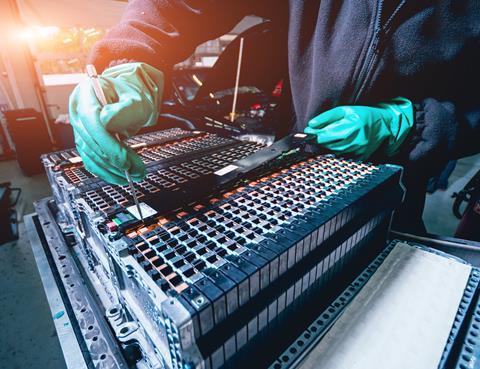At present, mainstream new energy vehicles mainly use power lithium batteries whose cathode materials are lithium iron phosphate or ternary materials, both of which have their own advantages in the fields of new energy buses and new energy passenger vehicles. So, which is better for lithium titanate battery, lithium iron phosphate and ternary battery?
This also starts with the performance of the three batteries. As we all know, the performance of lithium-ion batteries is mainly determined by the positive electrode, negative electrode, electrolyte and separator. The positive and negative electrode materials have an important impact on the key indicators of the battery, such as capacity, energy density, cycle life, safety, rate performance, and cost.
Although the same ternary is used as the positive electrode material, the lithium titanate battery breaks the traditional battery technology route of using graphene as the negative electrode, and uses lithium titanate as the negative electrode material, which makes it an outlier in the eyes of its peers. But it is the characteristics of lithium titanate itself that make the battery of this material have remarkable characteristics.
Taking lithium iron phosphate-graphene, ternary-graphene, and ternary-lithium titanate lithium-ion batteries as examples, in terms of energy density alone, lithium titanate batteries are at a disadvantage. The Northeast Securities Research Report pointed out that the current actual specific energy of lithium iron phosphate battery is 100-120Wh/kg, and the ternary battery is 150-200Wh/kg. Among them, the nickel-cobalt-aluminum ternary battery used by TSLA reaches 252Wh/kg. The Yinlong lithium-ion titanate battery is only 90Wh/kg, which is only half of that of some graphite-based anode material batteries.
In terms of cost, lithium titanate batteries have no advantages. At present, the raw materials of Yinlong lithium titanate battery include titanium hydroxide and lithium hydroxide, the price of which is higher than that of graphite anode materials. According to the survey results of my country’s battery network, the current cost of lithium iron phosphate and ternary battery is 1100 yuan/kwh-1200 yuan/kwh, while the cost of lithium titanate battery is about 2-3 times of ternary battery.
The energy density is twice as low and the cost is 2-3 times higher. How can lithium titanate batteries compete in the market? Obviously, it is its own unique advantages that moved some people in the industry.
First of all, considering the most important safety indicators of batteries, lithium titanate stands out.
When lithium titanate is used as the negative electrode material, the potential platform is as high as 1.55V, which is more than 1V higher than that of the traditional graphite negative electrode material. Although some energy density is lost, it also means that the battery is safer. Technical expert Lu Blu-ray once said that the demand for the negative electrode voltage is relatively low when the battery is fast charged, but if it is too low, the lithium-ion battery is prone to precipitation of very active metal lithium, which not only conducts electricity, but also reacts with the electrolyte. Heat is then released and flammable gases appear, causing a fire. The lithium titanate prevents the negative electrode voltage from being 0 because of the higher voltage of 1V, which indirectly prevents the precipitation of lithium ions, thereby ensuring the safety of the battery.
Because the lithium titanate battery can be used safely in both high temperature and low temperature environments, it also reflects its important advantages of wide temperature resistance (especially low temperature resistance). At present, the safe working temperature range of Yinlong lithium titanate battery is between -50 degrees and 65 degrees, while the energy of ordinary graphite anode batteries begins to decay when the temperature is lower than -20 degrees, and the charging capacity at -30 degrees is only At 14% of the total charging capacity, it simply cannot work properly in severe cold weather.
In addition, because the lithium titanate battery has only a 1% volume change even if it is overcharged, it is called a zero-strain material, which makes it have an extremely long life. Wei Yincang, chairman of Yinlong, once said that the service life of Yinlong lithium titanate battery can reach 30 years, which is equivalent to the service life of a car, while the average life of ordinary graphite anode material battery is only 3-4 years. From the perspective of the whole life cycle, the cost of lithium titanate battery is lower.
The last advantage of lithium titanate is its strong fast charge and discharge capability and high charge rate. At present, the charging rate of Yinlong lithium titanate battery is 10C or even 20C, while the charging rate of ordinary graphite anode material is only 2C-4C.
Based on these technical characteristics of lithium titanate batteries, industry insiders believe that they meet the needs of new energy buses and large-scale energy storage equipment. Take the bus as an example, the mileage of a single trip generally does not exceed 40 kilometers, and the time interval between each terminal station and waiting until the next departure is at least a few minutes. At this time, the disadvantage of low energy density of lithium titanate battery will not affect the use of passenger cars, but it will reflect the benefits of fast battery charging. As a public transportation, buses have put forward higher requirements on the safety and durability of batteries.

